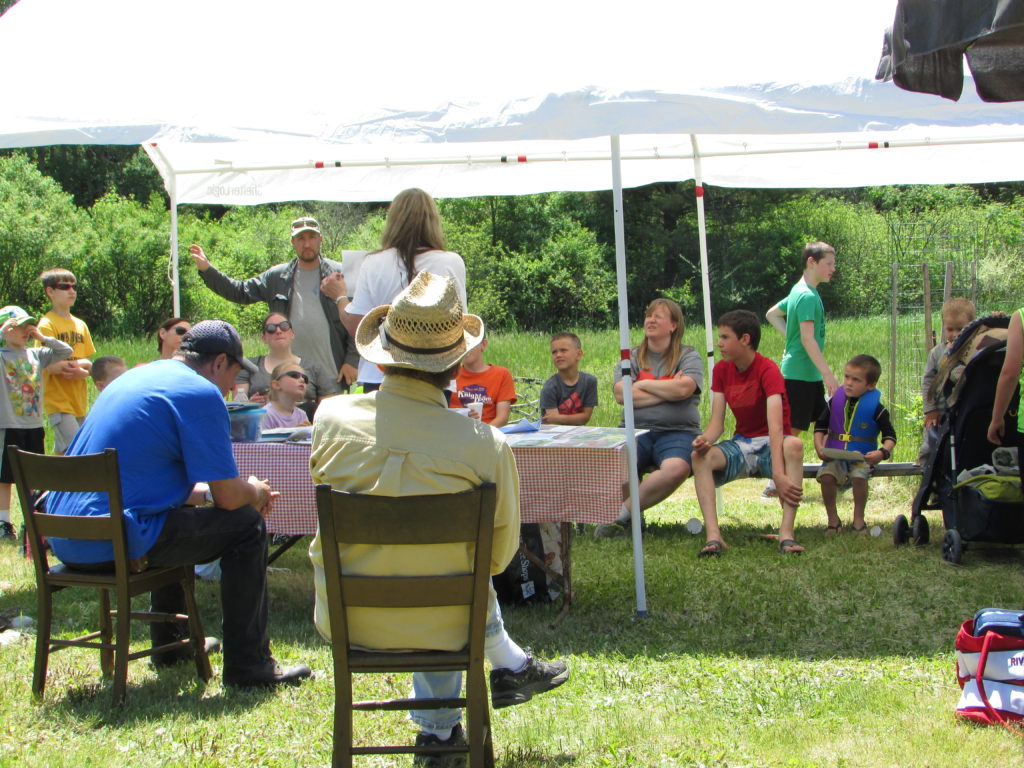Monarchs have arrived; now’s the time to plant milkweed and native flowers to help them
Contact(s): Brenna Jones, DNR conservation biologist, 608-267-0797; Paul Skawinski, WI Monarch Collaborative Urban & Greenspace Committee Co-Chair, 715-346-4853
MADISON – Monarch butterflies have arrived in Wisconsin after a 1,000-mile journey from the southern U.S. and are looking for milkweed to lay their eggs on. A coalition dedicated to conserving these summertime treasures is asking residents to provide more habitat for monarchs this summer and in coming years.
The group, the Wisconsin Monarch Collaborative [exit DNR], is working to help reverse an over 80% decline over the last two decades in the eastern U.S. monarch population that breeds in Wisconsin and other Midwestern states. The group advises that the best, most effective way to do that is to plant native milkweed, since milkweeds are the only source of food monarch caterpillars will eat and is a limiting factor in the butterfly’s population.
“Now is a great time to plant native species to help monarchs in Wisconsin,” says Paul Skawinski, co-chair of the Wisconsin Monarch Collaborative Urban & Greenspace Committee and President of Wild Ones Central Wisconsin Chapter.
“The monarchs are back in our area and are searching neighborhoods for milkweeds to lay eggs on. Everyone can do their part by just adding a few native flowers and milkweeds to their existing landscaping or by starting a brand new native garden.”
Many native plant nurseries around the state have large, healthy potted plants available, and some late summer bloomers planted now will likely flower this year, he says.
The Wisconsin Monarch Collaborative is composed of 70 groups and individuals who formally came together in 2018 to come up with voluntary strategies to increase monarch habitat on a massive scale. Participants include representatives from the Department of Natural Resources and other state and federal agencies, utilities, transportation groups, agriculture groups, university researchers, conservation groups and nature centers.
The group recently released their 20-year roadmap, the Wisconsin Monarch Conservation Strategy [exit DNR], which contains overarching voluntary goals that individuals, agencies and partners can use to help support monarch populations in Wisconsin.
“Wisconsin’s goal is ambitious: to add 120 million new stems of milkweed by 2038, and it will take every person, organization, and agency helping out,” says Brenna Jones, who coordinates the Wisconsin Monarch Collaborative, and is a conservation biologist for DNR’s Natural Heritage Conservation Program.
“Adult monarchs need nectar plants to feed on too. Fill your garden with species that are native to Wisconsin and provide nectar for monarchs from spring to fall. The monarchs produced in late summer will need to fuel up on nectar for their journey to their winter grounds in Mexico each fall.”
New handouts show monarchs’ favorite garden flowers and native milkweed species
Coalition members offer materials to help Wisconsinites learn more about the variety of native milkweed and suitable nectar plants. These include handouts of monarchs’ favorite garden flowers selected by the collaborative’s Urban & Greenspace Working Group members and Wisconsin’s native milkweed species. Find more information on creating monarch habitat in urban areas, farms, protected lands and utility and road rights of way on the “Get involved” dropdown menu on the Wisconsin Monarch Collaborative website [exit DNR].
Wisconsin is in the core breeding ground for the eastern migratory population of monarchs. The state’s milkweed feeds and produces several generations of the iconic black and orange butterflies each spring and summer before a final generation of Wisconsin monarchs gorges itself on wildflower nectar and embarks on a 2,000+-mile journey to central Mexico where they spend their winter resting in fir trees in the mountains.
These same long-distance fliers begin migrating north in the spring and get as far as Texas before laying eggs and dying. Their offspring take up the journey, and it is mostly this generation of butterflies that reaches Wisconsin in the spring and lays their eggs, beginning the cycle again.
While there are many factors for the decline in monarchs, habitat loss is considered the primary concern in the states where the monarch breeds. A coalition of non-governmental organizations and citizens has petitioned the United States Fish & Wildlife Service to list monarchs as a threatened species under the Endangered Species Act. That agency’s listing decision announcement was expected in summer 2019 but has recently been pushed back to December 2020.
Read how a growing number of Wisconsin residents, utilities, farmers and highway departments are helping protect and add monarch habitat in “Make a Place for Monarchs” in the April 2019 Wisconsin Natural Resources magazine. https://dnr.wi.gov/wnrmag/2019/Spring/monarch.html
You may also like
-
Where Wolves and Wisconsin Stand
-
Keep Wildlife Wild: Know What To Do If You Encounter Young Wild Animals
-
How to Avoid Ticks and Tick-Borne Diseases While in the Woods
-
ANNUAL SPRING HEARING AND PUBLIC INPUT OPPORTUNITY
-
Spring hearing begins — and more news in your latest Manitowoc outdoors report by Bob Schuh
